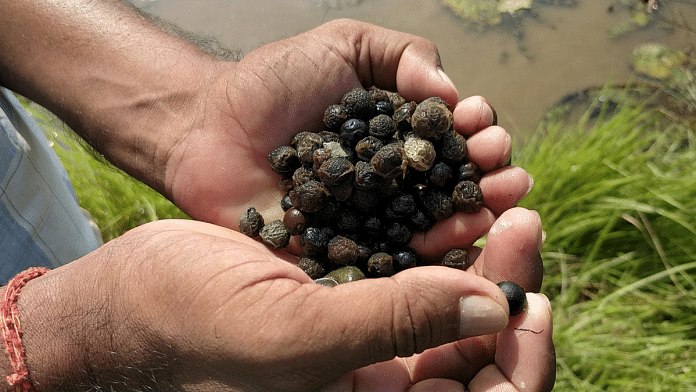The humble makhana, or the fox nut, is now India’s newest superfood. And with the recent Geographical Indication tag for the Mithila Makhana, it is set to go global too. Many in Bihar now anticipate a big business boom and the rise of makhana millionaires.
Farmers in the Mithila region, who have been growing it for generations, appear quite unaware of all the breathless excitement over the makhanas. They wade through dirty village ponds to pluck leaves full of thorns and dive into the bottom bare-bodied to collect the seeds.
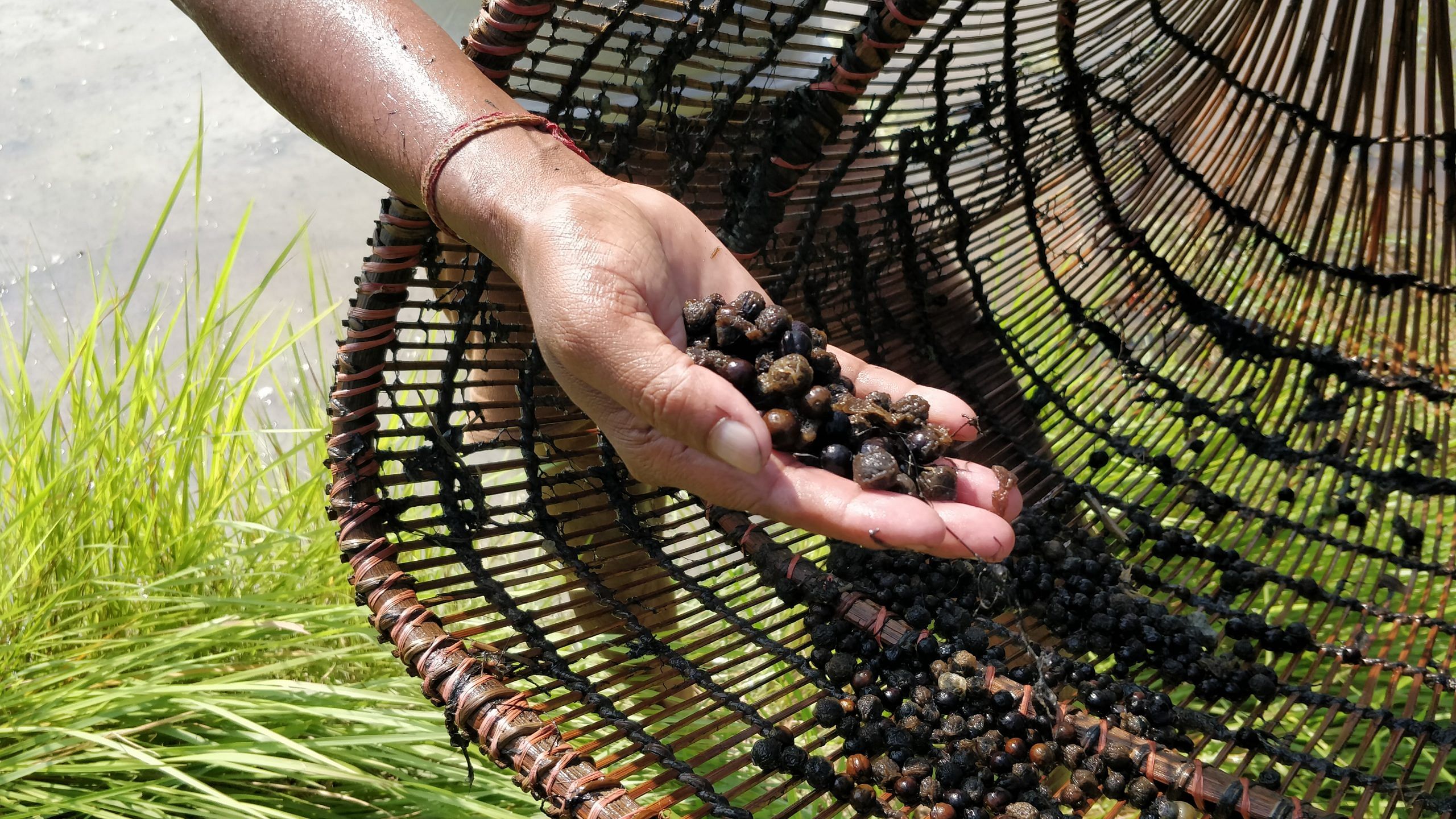
All that they have known is that the prices fell for the first time in many years this summer – by almost 50 per cent. Market volatility is a new thing.
But in Bihar, the recent buzz around the crop has stirred new businesses and research. The Darbhanga-based Research Centre for Makhana is ready to launch a new high-yield variety in the next couple of years. The Swarna Vaidehi was the last one developed by the Centre.
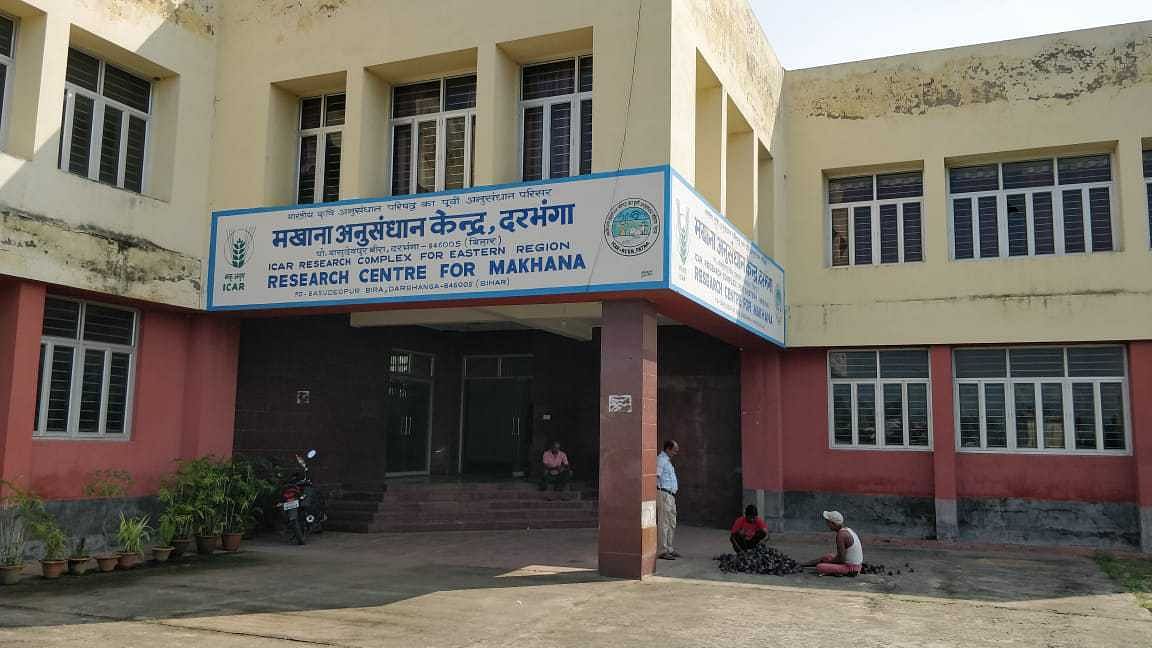
Entrepreneurs are lining up after quitting their regular, high-salaried corporate jobs to sniff out business opportunities in Bihar’s newest export industry.
Manish Anand, CEO of Mithila Naturals, left his job in 2012. He was born and raised in Patna and studied farm-to-fork economics before he built Asia’s largest makhana factory in Madhubani. “I take pride in bringing the finest quality of this gourmet delight from our ponds to your platter,” Anand says.
The sleepy world of makhanas has just opened up with new flavours, brands, and glitzy, colourful, shelf-worthy packaging for Indian and global consumers. If the optimism continues, makhanas can be Bihar’s next big thing.
“We serve makhanas in different tastes. We develop 18-19 recipes like makhana chai, kheer, shakes. Our main aim is to replace junk food with superfood,” Shravan Roy, who set up Sumitra Foods in Darbhanga in 2011, says.
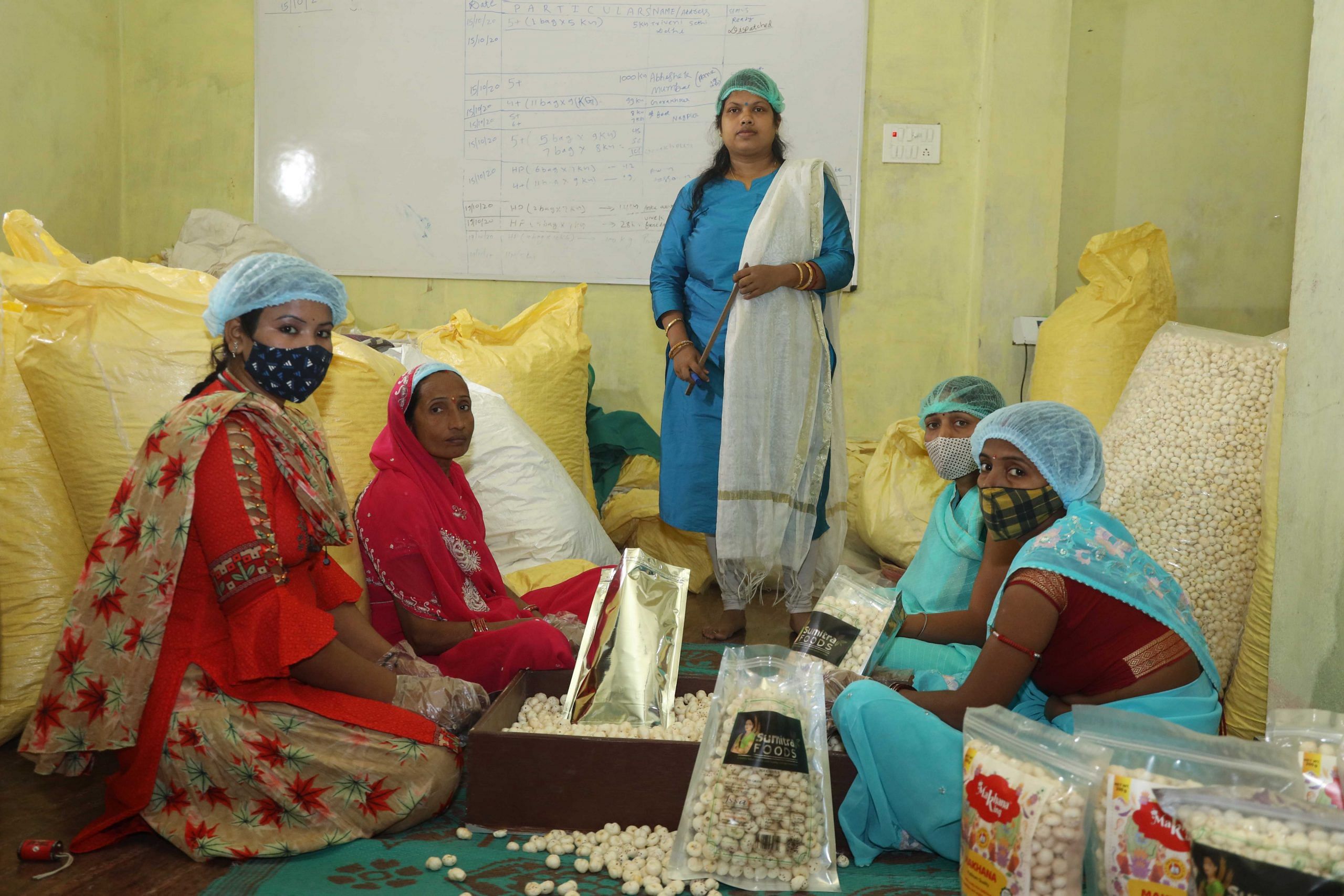
Makhana start-ups
For many entrepreneurs born in Bihar, makhana is a snack they grew up with. The demand picked up massively in the last five years, especially during the pandemic, and they are figuring out ways to add value to it and make it more city-friendly with flavours like peri peri, cinnamon and cheese, and herbs.
They are looking at a market beyond Bihar and building fancy glass-fronted office buildings and creating hundreds of new jobs.
“I had no idea about makhana farming and the food sector at that time. Roti (food), kapda (textiles), and makaan (real estate) are sectors that are evergreen, especially roti. The food sector is always a sunrise industry,” Shravan Roy says.
Makhayo is another new start-up that Rachit and Bhuwan Saraogi set up in Darbhanga after graduating from St. Xavier’s College in Kolkata. “We started working from a 100-150 sq. ft office during the lockdown. There was no huge awareness about makhanas back then,” says Rachit Saraogi.
Today, they have employed 150 people.
Also read: Netflix’s Khakee star IPS officer Amit Lodha is Bihari Singham, nightmare for ganglords
People are using makhana as a superfood all over the world. It has immunity-boosting powers as well as aphrodisiac and spermatogenic properties.
Vidyanath Jha, an eminent and pioneer makhana researcher and author of the 2003 book Makhana explains that the word ‘makhana’ is derived from the Sanskrit words makh (sacred ritual) and anna (grain), which means the food of yagna — or the sacred Hindu ritual performed before a fire.
Makhana is the fifth product after Jardalu mango of Bhagalpur, Katarni chawal (rice), Magahi paan of Nawada, and litchi of Muzaffarpur, to have gotten the GI tag in Bihar.
Roy, an engineer by qualification, says that makhanas were not known beyond the four Hindi-speaking North Indian states when he was in college. He quit his job at Adani Wilmar to set up a makhana start-up in Darbhanga. It was inaugurated by the math whiz Anand Kumar who set up the Super 30 in Bihar.
“My first target is to popularise the makhana among people,” Roy says. “There’s no comparison of makhana with other dry fruits — it has a high calorific value. There is a need to work on this. The industry is not organised, so there are a lot of opportunities in it,” he says.
Entrepreneurs are popularising their products through campaigns on Instagram, LinkedIn, and Facebook. Short videos feature different flavours and attractive packaging of the humble makhana.
Last week, Sumitra Foods participated in ‘Geographical Indication Mahotsav’, a government event at Deen Dayal Upadhyaya Trade Facilitation Centre, Bada Lalpur, Varanasi. Makhayo also hires over 75 families who work from home, processing and packaging the nuts. Women work on grading machines, sifting different sizes in the factory, which houses piles of white makhanas all over.
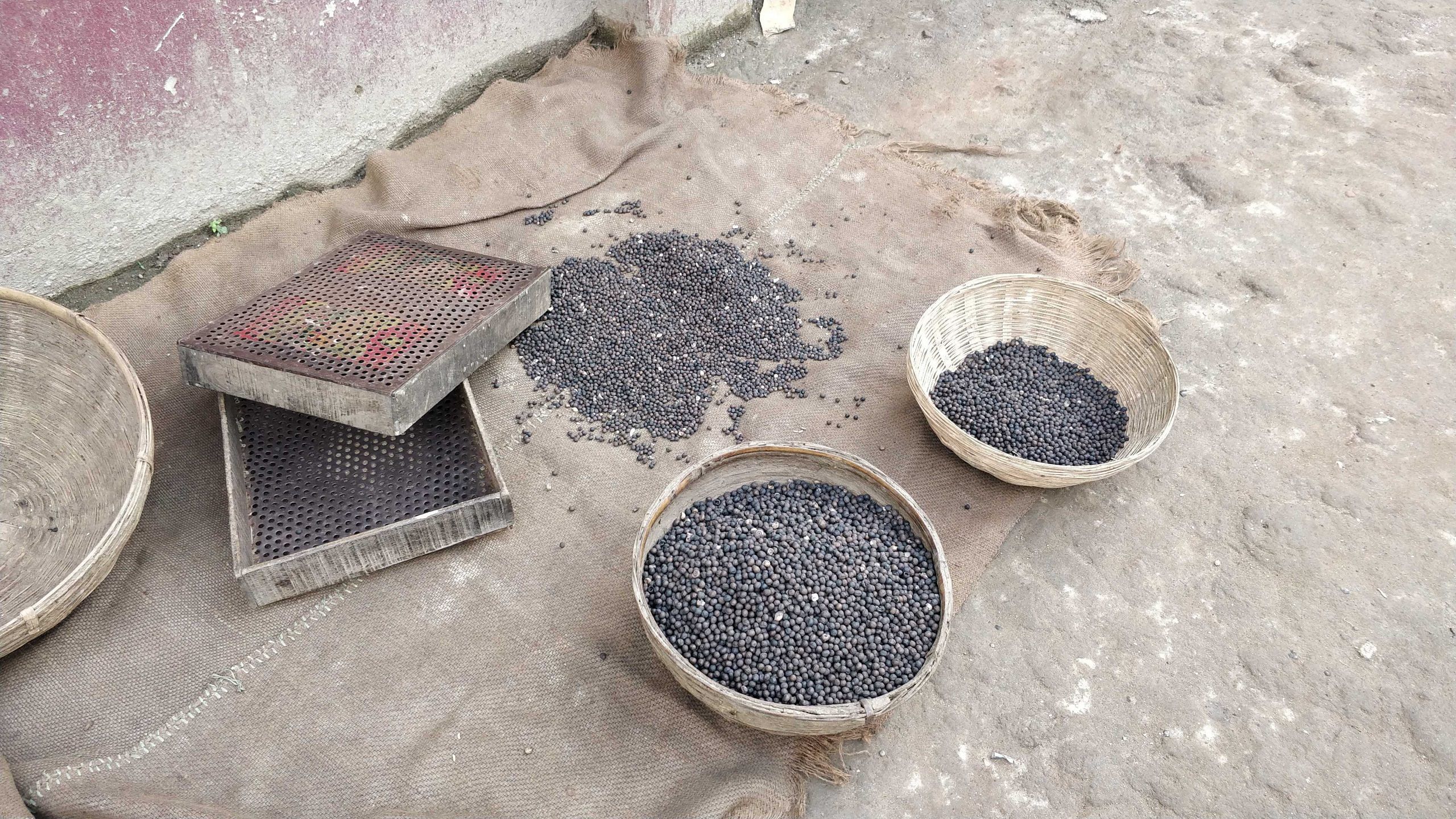
Mukhiya, a makhana farmer in Lalganj village, Saharsa, gets up at 2 am with his family to burst makhana seeds (gudi). Spreading them on a mat in a large courtyard, he says, “Suddenly, the rate of gudi and lava fell this year. There was a lot of loss. Money invested in the cultivation of makhana has not been returned.”
Kamal Kishore Chaudhary of Saharsa, involved in makhana business in Purnea’s Khuskibagh, says that there was surplus production last year and this season began with a lot of unsold stock driving the prices down.
Farmers travel for hours carrying huge gaanj and handi to transport the raw seeds from the farms to the processing units.
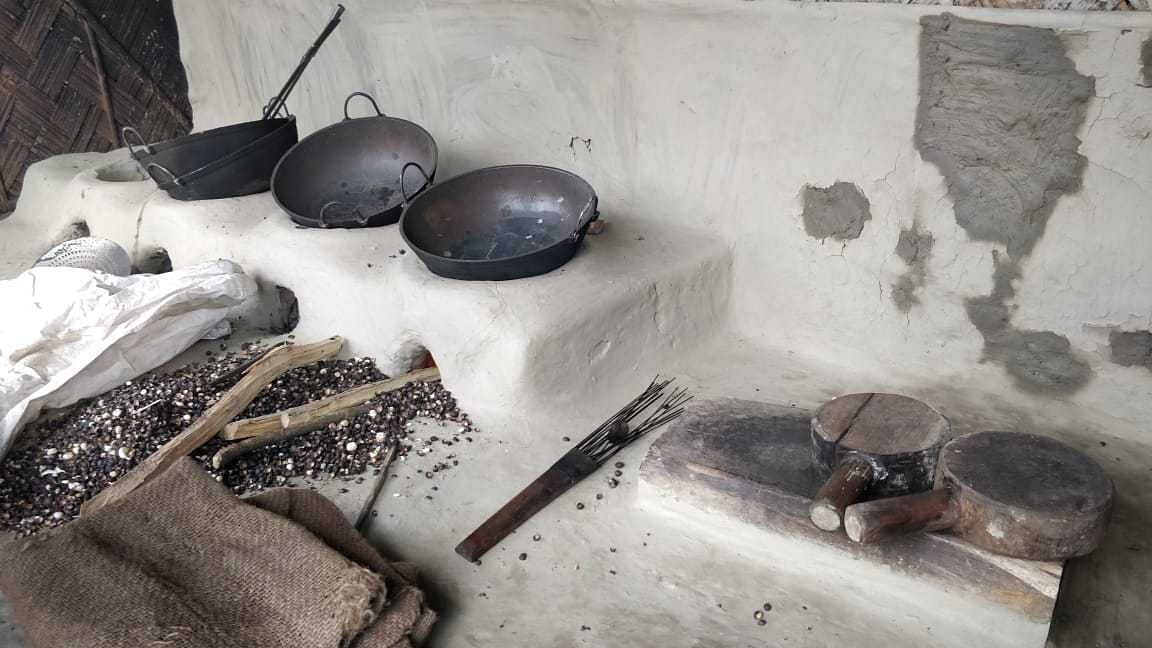
Harvesting is an arduous and complicated process, but now, Mallahas, experts on makhana farming, fear that they may lose their jobs if businesspersons bring in new machines.
Also read: Paperless Saharsa is Bihar’s new showcase district. It’s snipping the Great Indian Red Tape
GI tag journey, controversy, and strategy
It took four years of sustained campaigning by researchers, entrepreneurs, and farmers and strategic thinking to get the coveted GI tag for Mithila Makhanas, a key step toward realising its international ambition. On 20 August, Union commerce minister Piyush Goyal announced it in a tweet.
Makhana has got the GI tag in the name of the Mithilanchal Makhana Utpadak Sangh and is valid for a period of 10 years, following which it can be renewed.
There were some differences among the government, farmers, and makahana producers of the Mithila region, on whether the GI tag application should be for Bihar Makhana or Mithila Makhana. They needed to state historical evidence in the application document. But it wasn’t readily available in one library or archives. So, they came up with a neat little trick to crowd-research it by creating a mini controversy.
Anil Kumar, assistant professor and junior scientist at Bhola Paswan Shastri Agricultural College, has done all the documentation work. When Kumar went to Darbhanga and Madhubani, universities didn’t let him enter libraries. Then he released a press note mentioning the same, which caused an uproar in the region. Only then Kumar could gather the necessary details he wanted.
It worked out beautifully, and the tag went to Mithila. It was a win-win for Bihar — a promising export industry and increased ambitions for farmers.
Govt push
Darbhanga is no longer the makhana capital of Bihar. Kumar says that in the last 10 to 12 years, the cultivation in the Kosi-Seemanchal area has doubled, and Darbhanga-Madhubani now accounts for only 30 per cent of the total production.
Earlier, makhanas used to be grown on pokhars (ponds), but now, they are cultivated on fields too.
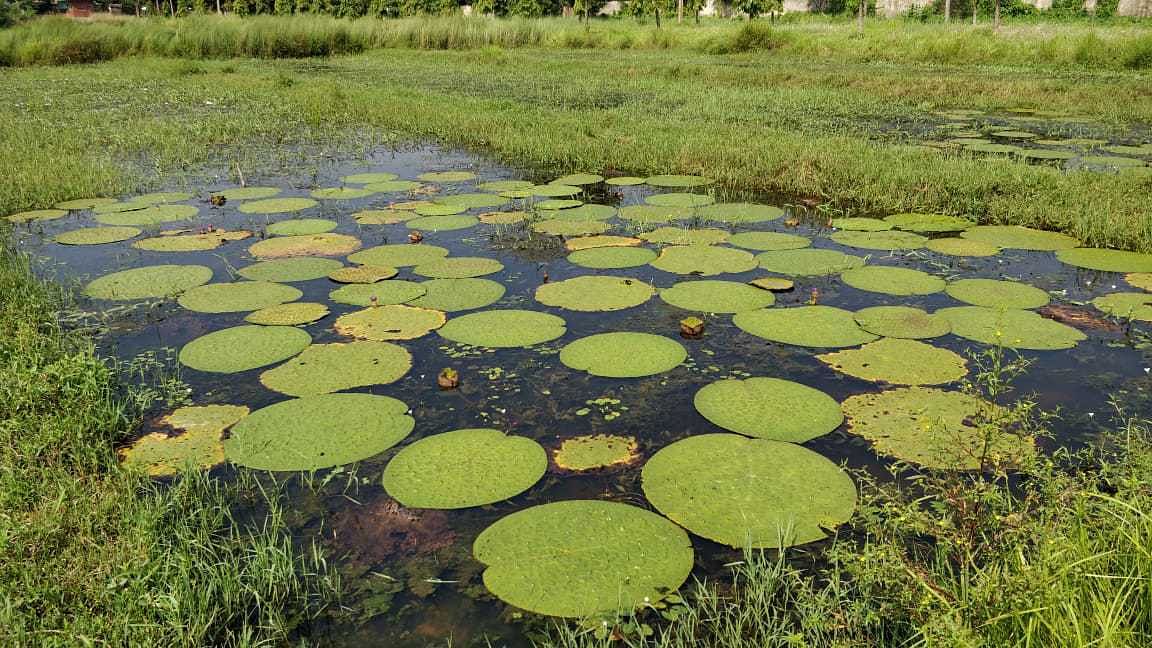
“In the wild form, it is found in North India, Korea, Japan, China. Makhanas in the Bihar region has been in cultivation for at least a thousand years,” says Vidyanath Jha.
To encourage farmers toward makhana cultivation, the Bihar government launched the Makhana Vikas Yojana in 2002 under which farmers receive a subsidy of up to 75 per cent on Sabour Makhana-1 and Swarna Vaidehi varieties.
Currently, makhanas are cultivated on a total area of 35,000 hectares in Bihar, which yields 73,500 MT of seeds.
After processing, around 40 per cent convert into pops. The Swarna Vaidehi variety was developed by training farmers in Uttar Pradesh and Chhattisgarh.
“Makhanas have been limited to the plates of elite people. Unless they make a place on the plates of the poor, their potential will not be used properly,” Kumar says.
The boom is also taking the makhana beyond Bihar.
The Naveen Patnaik government in Odisha invited entrepreneurs from Bihar in 2017 to cultivate makhanas in the state. Mayurbhanj and Kendujhar districts are witnessing growth.
Entrepreneurs say that the makhana industry is worth Rs 3,000 crore. According to a 2019 report titled Market Intelligence for Food & Agriculture Export: “The Makhana market will grow at a CAGR of almost 7% during the forecast period of 2019-2023. And the global makhana market size will grow by USD 72.5 million during 2019-2023.” The Narendra Modi government is encouraging makhana producer – a goal of 10,000 Farmer Producer Organisations by 2027-2028 and has promised to spend over Rs 6,800 crore. PM Modi had also designated Darbhanga for makhana farming under the flagship One District One Product scheme.
Also read: Bihar district courts are swamped with new disputes as land digitisation begins
Cultural relevance
There are seven sub-castes among the Mallahas who have inherited makhana farming knowledge from past generations. The new fame comes on top of what was always popular in Bihar.
Makhanas hold great religious importance and are also an integral part of social customs in Bihar. They are served to guests as a delicacy and used in festivals like Kojagra, which is dedicated to the Mithila Makhana.
In recent years, politicians have been garlanded with makhanas in rallies. A Maithili language proverb goes like this: Makhanak Pat San Moh Pochhab (Wiping the mouth with makhana leaves) — used to take a jibe at those making larger-than-life claims.
(Edited by Humra Laeeq)


